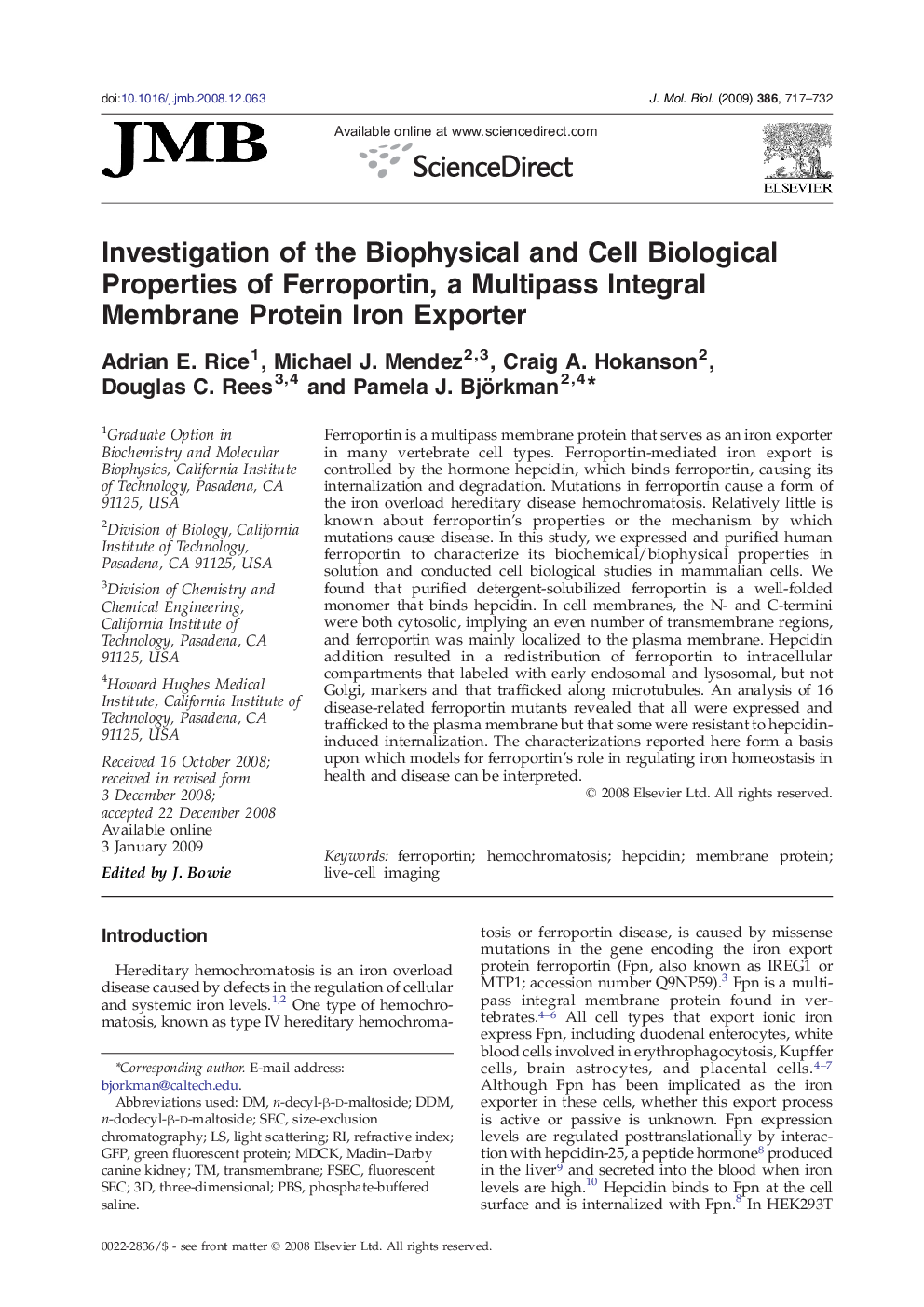| Article ID | Journal | Published Year | Pages | File Type |
|---|---|---|---|---|
| 2186901 | Journal of Molecular Biology | 2009 | 16 Pages |
SummaryFerroportin is a multipass membrane protein that serves as an iron exporter in many vertebrate cell types. Ferroportin-mediated iron export is controlled by the hormone hepcidin, which binds ferroportin, causing its internalization and degradation. Mutations in ferroportin cause a form of the iron overload hereditary disease hemochromatosis. Relatively little is known about ferroportin's properties or the mechanism by which mutations cause disease. In this study, we expressed and purified human ferroportin to characterize its biochemical/biophysical properties in solution and conducted cell biological studies in mammalian cells. We found that purified detergent-solubilized ferroportin is a well-folded monomer that binds hepcidin. In cell membranes, the N- and C-termini were both cytosolic, implying an even number of transmembrane regions, and ferroportin was mainly localized to the plasma membrane. Hepcidin addition resulted in a redistribution of ferroportin to intracellular compartments that labeled with early endosomal and lysosomal, but not Golgi, markers and that trafficked along microtubules. An analysis of 16 disease-related ferroportin mutants revealed that all were expressed and trafficked to the plasma membrane but that some were resistant to hepcidin-induced internalization. The characterizations reported here form a basis upon which models for ferroportin's role in regulating iron homeostasis in health and disease can be interpreted.
